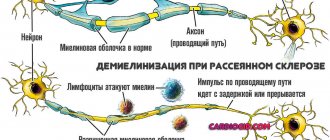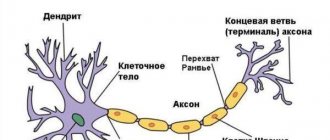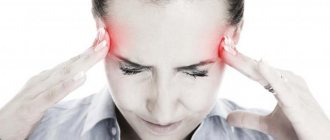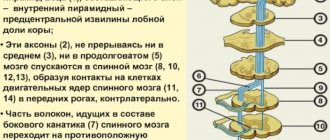Fainting is a transient loss of consciousness, usually associated with cerebral ischemia that occurs in a chronic form. Accompanied by general hypoperfusion of the brain matter - a condition provoked by progressive circulatory failure in the parts of the head. Vasovagal syncope occurs against the background of a decrease in the number of contractions of the heart muscle, which leads to a drop in blood pressure and deterioration of blood supply to the brain.
general information
In the ICD-10 classification, the pathology is noted in section R55 “Syncope”. In neurological practice, syncope attacks are more common than other forms of paroxysmal conditions. Paroxysms are not always associated with pathologies of the central nervous system. Sometimes somatic diseases act as decisive etiological factors.
Vasovagal syncope is a condition that is not usually associated with serious illness and is not life-threatening. Sometimes it occurs in healthy people. Often associated with a previous psychovegetative syndrome, which is manifested by increased emotionality and anxiety.
The pathogenesis is based on a violation of the neurohumoral regulation of the cardiovascular system, which in turn is provoked by disruptions in the functioning of the autonomic nervous system. The characteristics of vasovagal syncope include variability in its duration and severity. It can be short-term or long-lasting, mild and deep.
Orthostatic syncope
Treatment of orthostatic syncope involves educating patients on the factors leading to orthostatic syncope, non-drug and drug treatment of decreased circulating blood volume and impaired autonomic regulation. A non-pharmacologic approach involves slowly and carefully changing positions, staying hydrated, increasing intravascular volume, wearing rubber stockings, and exercise. In cases of severe episodes of fainting, medications that increase blood volume and vasoconstrictors may be prescribed.
Varieties
Statistics show that about 30% of adults have experienced syncope at least once. Fainting occurred in 4-6% of people who donated blood from a vein, and in 1% of patients receiving medical care in dental clinics. In medical practice, taking into account etiological factors, there are 3 main forms of fainting:
- Reflex (neurogenic) – diagnosed in 18% of cases.
- Cardiogenic. Occurs as a result of arrhythmia - 14% of cases, is associated with heart pathologies (valvular defects, cardiomyopathy, coronary disease) - 3% of cases.
- Occurring against the background of orthostatic hypotension – 8% of cases. A sudden change in body position, standing up or staying in an upright position for a long time is accompanied by insufficient blood flow to parts of the brain. The pathology is associated with a decrease in blood pressure.
Vasovagal syncope, along with situational (5% of cases), sinocarotid (1% of cases), atypical (34-48% of cases, etiological factors remain unknown) types belong to the reflex form. When describing vasovagal syncope, which is also known as simple or vasodepressor syncope, it is worth noting that it most often develops as a reaction of the body to stress. Situational syncope (fainting) can be triggered by the following factors:
- Sneezing and coughing.
- Eating and swallowing food.
- Physical exercise.
- Acts of urination and defecation.
- Abdominal pain.

These conditions are associated with a decrease in the volume of venous blood returning to the heart and increased activity of the vagus nerve. Syncope when coughing usually occurs in patients with diagnosed diseases of the respiratory system (acute pneumonia, chronic bronchitis).
The pathogenetic mechanism is associated with an increase in intrathoracic pressure, stimulation of vagal receptors (vagus nerve) located in the organs of the respiratory system, disruption of the pulmonary ventilation process, and a drop in oxygen saturation (blood saturation with oxygen).
Sinocarotid syncope usually occurs in older male patients. Provoking factors: rapid, sharp abduction of the head back, compression of the arteries supplying the brain in the neck due to a tightly tightened tie or a tightly buttoned shirt collar.
Syncope can be provoked by space-occupying formations (tumors, cysts) located in the area of the sinocarotid zone - the area where the carotid artery branches into external and internal branches. Activation of the carotid reflexes occurs due to the excitation of nerve endings located in the carotid sinus. As a result of compression of the carotid sinus, vasodilation occurs (relaxation, relaxation of the vascular wall) and a decrease in the number of heart contractions.
Examination of syncope
The examination should be carried out as soon as possible after the attack. The further away from syncope, the more difficult it is to make a diagnosis. Information obtained from witnesses is very important and should be obtained as early as possible.
Anamnesis
The history of the present illness should contain information about the events immediately preceding syncope, incl. what the patient was doing (for example, exercising, arguing, being in a situation that could provoke emotional stress), body position (for example, horizontal or vertical) and, if the patient was standing, it is necessary to find out how long. It should be noted that there are associated symptoms before or immediately after the event, incl. feeling like you are about to pass out, nausea, sweating, blurred or tunnel vision, tingling in your lips or fingertips, chest pain, or palpitations. It is necessary to establish the duration of the recovery period after syncope. If there are witnesses, you should ask them to describe the episode, paying special attention to the presence and duration of seizures.
Assessment of the condition of organs and systems. The patient should be asked about the presence of pain or injury, episodes of dizziness or near-syncope when standing, and episodes of palpitations or chest pain during exercise. The patient should be asked about symptoms that may be manifestations of the underlying disease, incl. the presence of loose stools or blood in the stool, heavy menstrual bleeding (anemia); vomiting, diarrhea, or massive urination (dehydration or electrolyte disturbances); as well as risk factors for pulmonary embolism (recent surgery or immobilization, presence of malignancy, history of coagulation disorders).
The history of other diseases should contain information about previous syncope, the presence of cardiovascular pathology, as well as a history of convulsive syndrome. The patient should be asked about the medications he is taking (especially antihypertensives, diuretics, vasodilators, and arthiarrhythmics).
Physical examination
During a general examination, the patient’s mental status is assessed, incl. presence of confusion or hesitancy suggestive of a postictal state, as well as signs of trauma (eg, bruising, swelling, tension, tongue biting).
When auscultating the heart, you need to pay attention to the presence of murmurs; The change in noise when performing the Valsalva maneuver, standing up or squatting is also important.
Careful assessment of a regular pulse of 73-1 along with palpation of the carotid arteries or auscultation of the heart can help diagnose arrhythmias if ECG recording is not possible.
Some physicians perform unilateral carotid sinus massage while monitoring ECGs with the patient in the supine position to detect bradycardia or block and diagnose carotid sinus hypersensitivity.
When palpating the abdomen, it is necessary to pay attention to the presence of muscle tension, and a rectal examination is carried out to identify obvious or hidden bleeding.
A complete neurological examination is performed to identify focal symptoms, which may indicate central nervous system damage as the cause of syncope (for example, seizure disorders).
Signs that require increased attention
A number of signs indicate serious illnesses as causes of syncope:
- Syncope during exercise.
- Multiple episodes over a short period of time.
- Presence of a heart murmur or other signs of structural pathology (eg, chest pain).
- Elderly age.
- Significant injury during an episode of syncope.
- Family history of sudden death.
Interpretation of the data obtained
Although the causes of syncope are often benign, it is important to identify diseases that pose a threat to life (eg, tachyarrhythmias, heart blocks) and cause sudden death. Clinical data allow us to suspect a cause in 40-50% of cases. We can summarize them as follows.
Benign causes often lead to syncope. Syncope, which is preceded by physical or emotional stress (eg, pain, fear), occurs in an upright position, and often has precursors mediated by vagal influences (eg, nausea, weakness, yawning, anxiety, blurred vision, sweating) is usually classified as vasovagal syncope. states.
Syncope, which usually occurs when moving to a vertical position, indicates an orthostatic cause. Syncope, which occurs during prolonged standing, is usually caused by the deposition of blood in the venous bed.
Loss of consciousness that occurs suddenly, associated with muscle twitching or spasms, incontinence or tongue biting, followed by postictal confusion or somnolence, indicate seizure syndromes.
The presence of signs that require increased attention indicates a serious cause of syncope.
Syncope that occurs during physical activity indicates obstruction of the outflow tract of the heart. These patients sometimes also have chest pain, palpitations, or both. Physical examination findings may help determine the cause. A rough murmur at the base of the heart, increasing at the end of systole and directed to the carotid arteries, indicates aortic stenosis; A systolic murmur that increases with the Valsalva maneuver and decreases with squats may be a sign of hypertrophic cardiomyopathy.
Syncope, which occurs and passes suddenly and spontaneously, is characteristic of cardiac causes, most often of rhythm disturbances. Since vasovagal and orthostatic mechanisms do not imply the development of syncope in the horizontal position, the occurrence of syncope in the supine position may also indicate arrhythmias.
If the patient is injured during syncope, the likelihood of a cardiac cause or seizure syndrome increases and, accordingly, alertness increases. The presence of warning signs of loss of consciousness that accompany benign vasovagal syncope somewhat reduces the risk of injury during an attack.
Instrumental examination
Instrumental examination is usually indicated for these patients.
- ECG.
- Pulse oximetry.
- Sometimes echocardiography.
- Sometimes tilt test.
- Blood tests only if clinically indicated.
- In rare cases, a CNS examination is performed.
In general, if syncope results in injury or recurs, more thorough evaluation is required.
If rhythm disturbances, myocarditis or coronary heart disease are suspected, the patient requires hospitalization for examination.
An ECG is performed on all patients. An ECG may reveal rhythm disturbances, conduction disturbances, myocardial hypertrophy, accessory pathways, prolongation of the OT interval, pacemaker dysfunction, myocardial ischemia or myocardial infarction. In the absence of clinical signs, it is advisable for elderly patients to determine the level of markers of myocardial damage to exclude infarction, as well as conduct ECG monitoring for at least 24 hours. If arrhythmias are detected, it is necessary to identify their connection with disturbances of consciousness in order to accurately establish the cause of syncope, however, in most patients syncope does not develop during monitoring. On the other hand, the presence of symptoms in the absence of rhythm disturbances allows us to exclude this cause of syncope. The use of recorders may be useful if syncope is preceded by warning signs.
Laboratory tests are performed depending on the clinical situation; An automatically performed standard laboratory examination is usually uninformative. However, all women of childbearing age should take a pregnancy test. If anemia is suspected, the hematocrit level is determined. Determination of electrolytes is carried out if there is reason. Serum troponin levels are assessed to rule out acute myocardial infarction.
Echocardiography is indicated for patients in whom syncope occurs during exercise, in the presence of a heart murmur, or in cases of suspected cardiac tumors (for example, in the presence of postural syncope).
It is advisable to perform a tilt test if the history or physical examination reveals evidence of a vasodepressor or other reflex syncope. This method is also used to evaluate stress-induced syncope.
Stress tests are performed if transient myocardial ischemia is suspected. Often performed on patients with stress-induced symptoms.
Invasive electrophysiological testing is performed if arrhythmia cannot be detected using non-invasive methods in patients with unexplained recurrent syncope; a negative result identifies a low-risk subgroup with a high likelihood of remission of syncope. In other patients, the indications for electrophysiological studies are ambiguous. Stress tests are less informative unless syncope is provoked by physical activity.
An EEG is indicated if a seizure disorder is suspected.
Causes
Vasovagal syncope is a common cause of loss of consciousness of a transient, sudden, short-term type. Typically occurs during adolescence and early adulthood. The mechanisms of pathogenesis are associated with emotional factors. Typically, the causes of vasovagal syncope are caused by worries and fear provoked by external circumstances - upcoming dental treatment, blood sampling from a vein, situations of real and imaginary danger.
The pathogenesis is based on excessive deposition (accumulation) of blood in the veins located in the lower extremities. The blood accumulated in the veins temporarily does not participate in the general circulation, which leads to a lack of blood supply to certain vascular regions, including parts of the brain. One of the pathogenetic factors is a violation of the reflex effect on the activity of the heart. Causes and mechanism of development of vasovagal syncope:
- A sharp decrease in the values of total peripheral vascular resistance (resistance of the vascular walls to blood flow, resulting from viscosity, vortex movements of the blood flow, friction against the vascular wall).
- Dilatation (expansion) of peripheral vessels.
- Decreasing the amount of blood that flows to the heart.
- Decreased blood pressure levels.
- Reflex bradycardia (change in sinus rhythm of the heart, decrease in heart rate - less than 50 beats per minute).
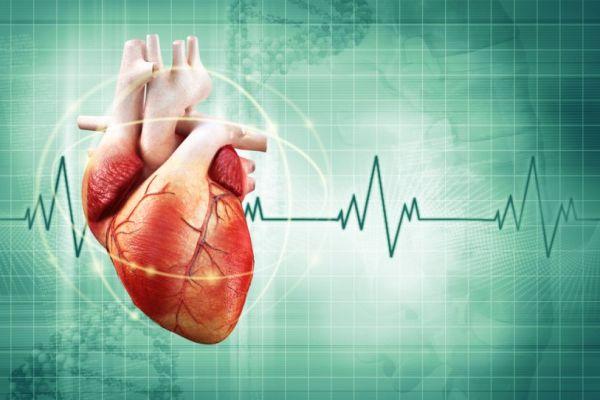
Among the provoking factors, it is worth noting lack of sleep, physical fatigue, nervous tension, drinking alcohol, increased temperature of the environment or the human body.
Neurotransmitter (reflex) fainting
It is important to inform patients that reflex syncope is usually not life-threatening, but injury may occur during syncope if appropriate measures are not taken. Patients should be educated about the warning signs of neurotransmitter syncope and taught how to prevent it. These include avoiding dehydration (drinking enough fluids, eating moderately salty foods), compensatory movements during the prodrome (eg, lie down and raise your legs, squat, isometrically clench your hands, tense your arms, cross your legs), wearing rubber stockings, standing training. Standing training results in decreased neurovascular sensitivity to orthostatic stress. It is recommended to start with 3 - 5 minutes of standing twice a day, gradually increasing the standing time to 30 - 40 minutes twice a day. Some patients require medications that increase blood volume, beta blockers, and vasoconstrictors.
Symptoms
Vasodepressor syncope is typically characterized by the absence of organic heart pathologies. The clinical picture is standard and boils down to loss of consciousness, loss of postural (normal muscle tone) tone, and sometimes trauma associated with a fall. During the prodromal period (preceding vasovagal syncope) symptoms are observed:
- General weakness, dizziness.
- Increased sweating (primarily in the frontal area).
- Darkening in the eyes.
- Pallor of the skin.
- Noise in ears.
The symptoms are not specific. For example, tinnitus, dizziness, confusion, and darkening of the eyes are observed in various brain pathologies - TIA, stroke, abscess and infectious lesions of the central nervous system, atherosclerosis and related ischemic processes, hydrocephalus, stroke.
The duration of the prodrome is usually 0.5-2 minutes. Syncope occurs when a person is in an upright position. If the patient takes a lying or sitting position during the prodromal period, fainting can often be prevented. Typical signs of syncope: bradycardia, severe pallor of the skin (especially in the face), decreased blood pressure.
When the patient assumes a horizontal position, the symptoms regress and consciousness is restored. The post-syncope period is characterized by a feeling of severe weakness. The skin becomes warm and moisturized. Unlike reflex fainting, syncope of cardiogenic origin occurs regardless of the position of the patient’s torso.
The clinical picture of the cardiogenic form includes signs: pale or bluish coloration of the skin, mydriasis (dilated pupils), weakened skeletal muscle tone, cardiac arrhythmia, decreased blood pressure, shallow, rapid breathing. Convulsions are often observed, which, as they progress, take the form of a generalized attack.
The prodromal period is characterized by rapid heartbeat, a feeling of uneven heart rhythm, a feeling of lack of air, and pain in the chest area. Patients prone to the appearance of cardiogenic syncope have a history of coronary heart disease, dilated (associated with the expansion of the natural cavities of the heart) cardiomyopathy, and heart defects.
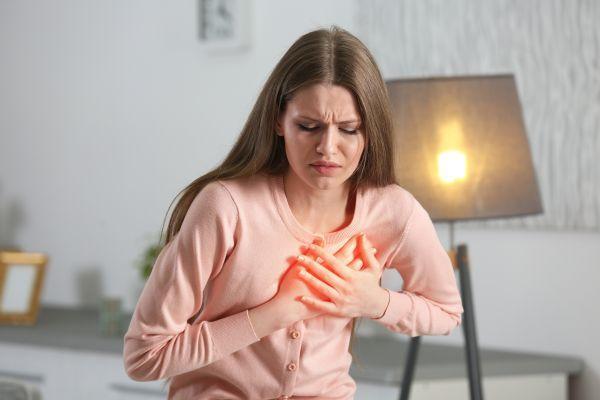
Diagnostics
Of particular importance in the diagnosis of syncope are anamnesis data and examination using physical methods. The examination allows us to determine the cause of syncope in 50-85% of cases. During a visual examination, the doctor determines the patient’s neurological status and identifies signs of somatic diseases.
Fainting caused by tumor processes and emergency conditions (myocardial infarction, hemorrhage, pulmonary embolism) are excluded. Taking an anamnesis involves obtaining information regarding the periodicity, frequency and typical clinical manifestations of attacks. Instrumental diagnostic methods:
- Electrocardiography, ECG monitoring. It is carried out to exclude arrhythmogenic (arrhythmia-related) genesis. Arrhythmias are detected in 4% of patients.
- Echocardiography. Organic pathologies of the heart are detected.
- Electroencephalography. It is carried out to differentiate fainting from epileptic seizures.
A tilt test (provocation of syncope) is performed if syncope occurs repeatedly, is suspected to be vasovagal or of unknown origin (especially in cases accompanied by convulsions). MRI and CT examinations are carried out to detect structural changes in brain tissue.




